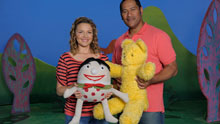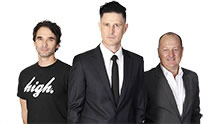Help
Classification
ABC TV has classification time zones for each channel. The timezones reflect the multi-channel nature of the ABC TV service and the differences that exists between the channels. ABC and ABC2 offer programs of wide and specific appeal for adult audiences, while ABC KIDS caters for pre-schoolers and ABC3 for older children.
The timezones that apply to ABC TV can be found in the Associated Standard on Television Program Classification which is part of the ABC's Code of Practice. The timezone charts below are examples from the Code and reflect how ABC classification timezones are implemented in practice. For more detail go to the Associated Standard on Television Program Classification.
ABC and ABCNews24
Weekdays
| 5am | 6am | 8:30am | 12pm | 3pm | 4pm | 6pm | 8:30pm | 9pm | 5am |
|---|---|---|---|---|---|---|---|---|---|
School Holidays/ Public Holidays and Weekends
| 5am | 6am | 8:30am | 12pm | 3pm | 4pm | 6pm | 8:30pm | 9pm | 5am |
|---|---|---|---|---|---|---|---|---|---|
ABC KIDS
Weekdays, School Holidays/Public Holidays and Weekends
| 6am | 7pm | ||||||||
|---|---|---|---|---|---|---|---|---|---|
ABC2
Weekdays, School Holidays/Public Holidays and Weekends
| 7pm | 8:30pm | 9pm | 3am |
|---|---|---|---|
ABC3
Weekdays, School Holidays/Public Holidays
| 5am | 6am | 8:30am | 12pm | 3pm | 4pm | 6pm | 8:30pm | 9pm |
|---|---|---|---|---|---|---|---|---|
Weekends
| 5am | 6am | 10am | 12pm | 3pm | 4pm | 6pm | 8:30pm | 9pm |
|---|---|---|---|---|---|---|---|---|
About Classification
The ABC offers you and your family information to help with your viewing choices through classification categories, warnings, and symbols.
Programs you watch on ABC television have been classified and scheduled to comply with the ABC Code of Practice. The Code includes an Associated Standard on Television Program Classification. This Standard sets out classification categories, warnings, symbols and time zones when programs may be shown.
The guiding principle in the application of ABC classifications is context. What is inappropriate and unacceptable in one context may be appropriate and acceptable in another. For example, in an arts documentary brief nudity may be appropriate but would likely be inappropriate in a program intended for young children. Factors to be taken into account include the artistic or educational merit of the production, the purpose of a sequence, the tone, the camera work, the intensity and relevance of the material, the treatment, and the intended audience.
Classifiable elements considered in programs are themes, violence, sex, language, drug use and nudity.
Programs on iview contain embedded classification information.
The ABC does not classify news, current affairs and sporting events but aims to provide information about the nature of content likely to cause harm or offence.
General (G) Classification
G programs may be shown at any time.
G programs are suitable for children to watch on their own but not all G programs are intended for children. Some G programs may be more appropriate for older children or adults. Whether or not the program is intended for children, the treatment of themes and other classifiable elements will be careful and discreet. Examples of G rated content include Play School, Little Lunch, and Kitchen Cabinet.
Parental Guidance (PG) Classification recommends parental guidance for people aged under 15 years
PG programs may contain themes and concepts which, when viewed by those under 15 years, may require the guidance of an adult. The PG classification signals to parents that material in this category contains depictions or references which could be confusing or upsetting to children without adult guidance. Parents may choose to preview the material for their children or to watch the material with their children, or to be accessible during or after the viewing to discuss the content. Examples of PG rated content include Doctor Who, Catalyst and Compass.
Mature (M) Classification is recommended for people aged 15 years and over
Programs classified M contain material that is considered to be potentially harmful or disturbing to those under 15 years. Depictions and references to classifiable elements may contain detail. While most themes may be dealt with, the explicitness and intensity of treatment will determine what can be accommodated in the M classification. More explicit or more intense material, especially violent material, will generally be included in the MA15+ classification.
Programs classified M include an onscreen audio and visual warning about the content, shown at the beginning of the program. Examples of M rated content include Rake, Good Game and Gruen.
Mature Audience (MA15+) Classification is not suitable for people aged under 15 years
Programs classified MA15+ deal with issues or contain depictions that require a more mature perspective. This is because the impact of individual elements or a combination of elements is considered likely to be harmful or disturbing to viewers under 15 years of age. MA15+ is the highest classification category on ABC television.
Programs classified MA15+ include an onscreen audio and visual warning about the content, shown at the beginning of the program. Examples of MA15+ content include Rage, The Warehouse Comedy Festival and Soul Mates.


















